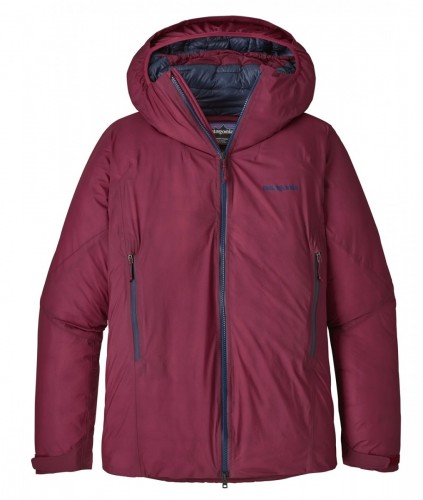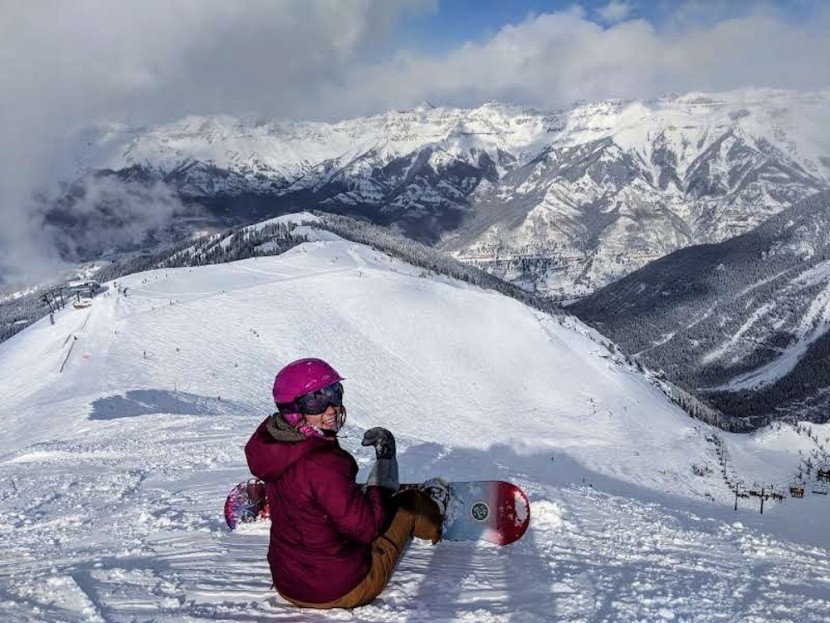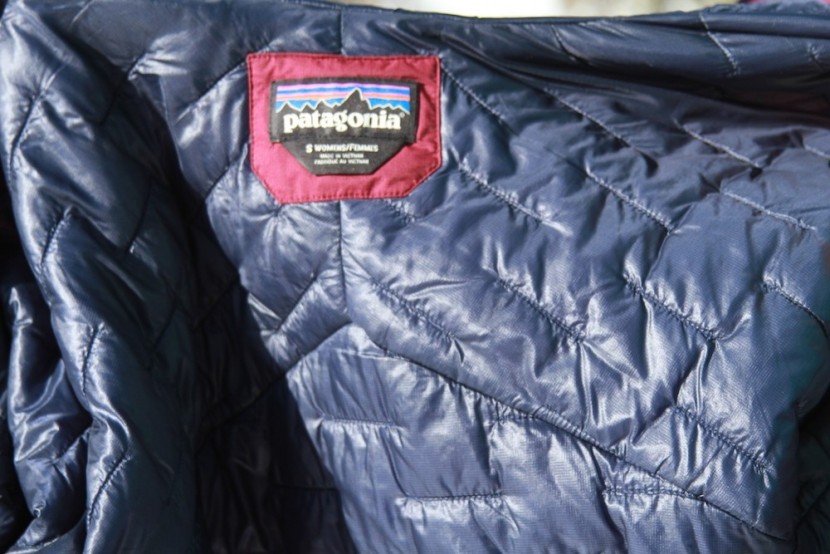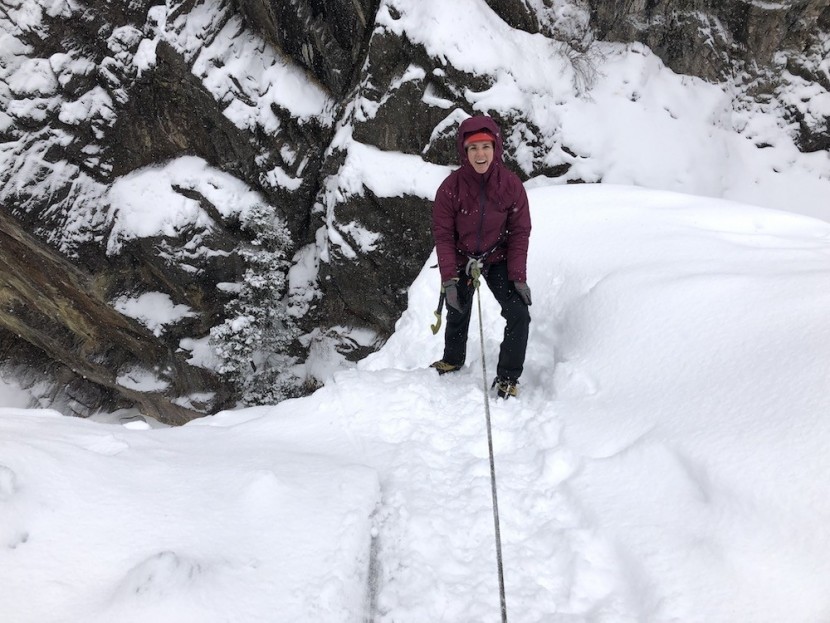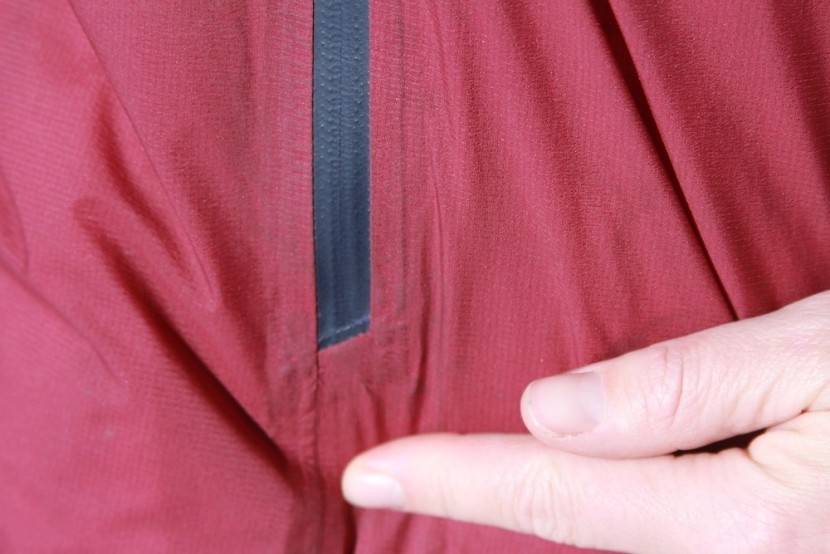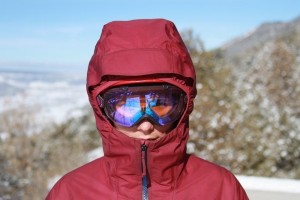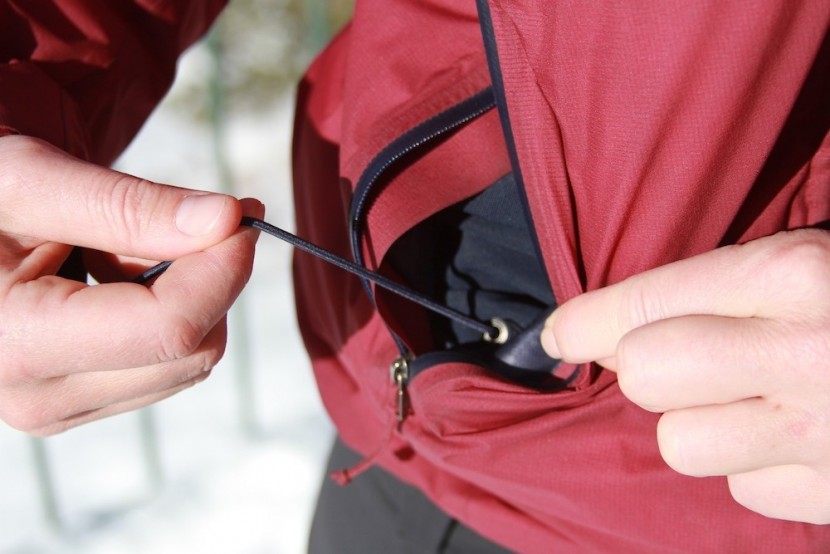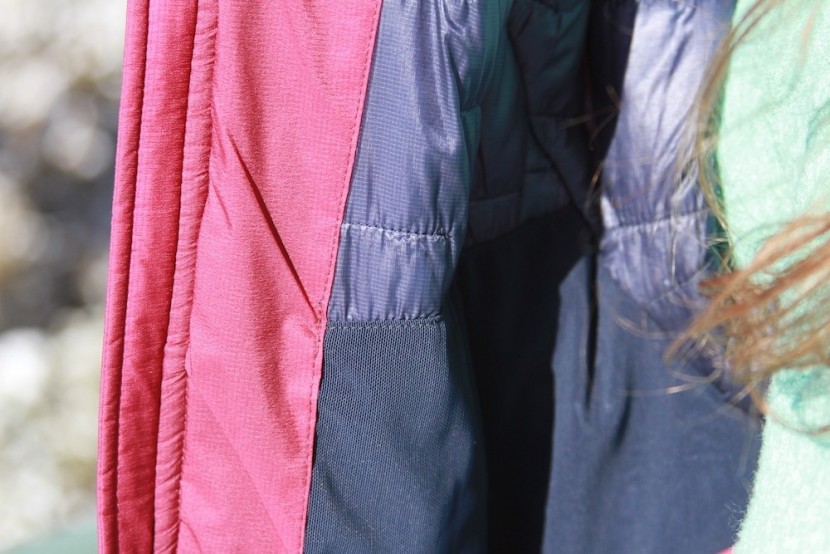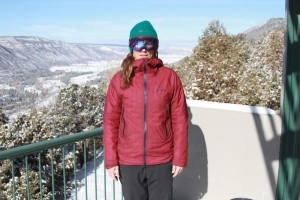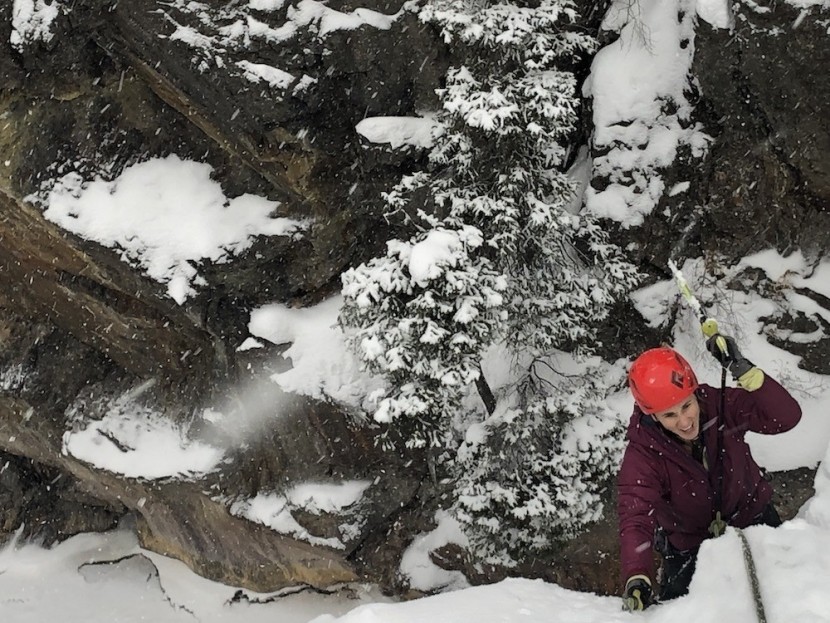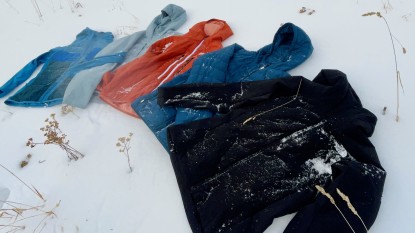Not all people need this type of jacket. In fact, simply just buying a shell and a separate insulative layer is far more versatile because you can wear both at the same time, or either on their own. You can change it up with the weather. The downside of buying two jackets is that it's more expensive. Our recommendation is that if you're not living in a wet climate where you are experiencing high winds and/or rain all the time, consider other insulative jacket option like the Rab Xenon X, our Editor's Choice winner paired with a shell. This combination allows more versatility based on what the weather will throw at you.
However, if you're always in wet weather and wishing that you had an insulative and lightweight shell jacket, the Micro Puff Storm may be perfect. It will keep you protected from the elements while offering ample warmth. In addition, given it's boxier design, it provides ample room for layering. While the price is a little high (at $499!), you have to remember that you are getting two jackets for the price of one. Unfortunately, the material doesn't breathe well, but the massive pockets do provide venting options. Wear it while ice climbing, cragging, or while hiking in cold, nasty weather.Patagonia Micro Puff Storm - Women's Review
Our Verdict
Our Analysis and Test Results
This Top Pick excels in the realm of weather protection. Outfitted with a waterproof H2No synthetic shell with a built-in (non-removable) insulative layer, it provides warmth and protection in the wake of cool and wet weather. This jacket is best if you're going to find yourself constantly playing in precipitation where the temperatures are cold. If you're simply looking for a warm coat without this specialization, there are much better (and more affordable) options out there.
Warmth
After sitting out in the rain, snow, and sleet we learned that the Patagonia MicroPuff Storm is quite weatherproof, but not very warm on its own. Offering 65-grams of PlumaFill insulation that is sewn right into the shell, this jacket will perform on days that hover around freezing with an additional layer. It's a perfect option for cooler weather in the shoulder seasons but definitely needs to be layered with an additional insulating layer during the colder days of the year. Many of our testers preferred a layered set-up where the shell is separate from the insulated layer…simply to enhance versatility and warmth.
The construct of the jacket provides ample room to add additional layers. While this extra room adds more versatility to the jacket, it doesn't hug the body as well as other quilted competitors. As a result, air that is trapped in that space doesn't stay as warm and thus doesn't provide as much warmth overall.
Like all insulated jackets tested, the insulated retains its warmth when wet, and the Pertex Quantum liner that protects the insulation provides a barrier to keeps you dry, even if the coat becomes saturated in a heavy downfall. This intrepid use of Patagonia' H2No shell material makes it an incredibly weatherproof (which we'll discuss later), adding to its overall warmth.
All in all, while the MicroPuff Storm is a sufficient jacket to wear with a t-shirt in warmer conditions, you'll need to ensure that you add an insulative layer underneath when the temperature dip way into the double negatives.
Weight & Compression
Utilizing a unique mesh-system that is sewn into the interior of the jacket, you can stuff this shell and insulated jacket combination into itself. Given that the shell is composed of rigid shell material, it doesn't compress as well as jackets that don't feature this construction.
As a result, it's one of the least compressible jackets at a heavier weight. That taken into consideration, given its level of weather protection, compression and weight is an inherent trade-off. In comparison to other coats that offer this level of performance and protection, we'd argue that its level of compression and weight is actually exemplary. Unlike heavy jackets that you might have worn once as a kid, it feels lightweight to wear and still packs nicely into a backpack without too much bulk. A perfect option to stash away as an emergency layer while cragging or hiking in the mountains.
Weather Resistance
If weather resistance is your top priority, the Patagonia MicroPuff Storm is pretty much bombproof. Outfitted with two layers of H2No Performance shell material, it holds up to wet weather and wind in the stormiest of conditions.
During our testing period, we wore this jacket through wind storms while backcountry skiing on the tops of mountains. We also wore it while simply belaying at the crag on balmy, sunny days. Around Ouray, CO is the ice park, where we spent some time throwing axes into the ice to move our bodies upwards. In all of these conditions, and in our shower tests, the shell warded off the water, keeping our core and bodies nice, warm and dry.
Another cool feature is the waterproof zippers. Typically in our shower tests, jackets will fail at the seams or at the zipper level. In the case of the Patagonia MicroPuff Storm, the sealed zipper proved to be sufficient, offering ample protection from both wind and precipitation.
Overall, this is a very protective coat that will suffice for many extremes of weather missions. We wouldn't recommend it where you might find yourself in a constant downpour day in and day out, but it's perfect for the snow and basic rainstorms. In comparison to the rest of the insulated jackets we've tested, it's definitely the most weather resistant…earning a Top Pick award.
Comfort & Coziness
The baffles loaded with PlumaFill insulation provide a lofty feel to the jacket that many of our testers appreciated. While this isn't the most comfortable or cozy contender, it certainly feels lightweight to don for all-day wear. The shell is rigid and makes noise while moving, and the fit of the jacket isn't tight, but loose. As a result, you can easily load bulky or thin layers underneath it with ease. In addition, it has some performance features that add to its great performance.
Let's talk pockets. They are massive! The hand warming pockets aren't particularly cozy, but large enough to fit a water bottle or even a small lunch. If you have to fit a gloved hand inside, you'll have no problem. Looking for a place to stash your gloves? The internal mesh pockets on the interior of the jacket are perfectly massive, doubling as a stuff sack and storage space.
The zipper pull tabs are nice and long, making them super easy to use with a pair of bulky gloves.
Another feature that we appreciate is the single-pull at the back of the massive hood. This cinch string is placed all around the circumference of the hood, providing a precise and easy fit when wearing the hood either with or without a helmet.
We also like the easy-to-use pull tabs at the hem of the jacket that can be used to lock in heat when the mercury begins to plummet.
While this jacket has many nice features and lofty interior construction, it's not the most comfortable or cozy out there simply because it's not ultra-fitted and the fabric is somewhat rigid. It's not our top choice when considering coziness, but it's certainly comfortable enough for all-day wear in terrible weather.
Breathability
While the Patagonia website advertises H2No shells to be both “completely waterproof, windproof, and breathable”, we can only stand behind two of these claims. While testing, we certainly agree that the shell is waterproof and windproof (in most conditions), however, the fabric is not breathable. While the big pockets along the side of the coat provide a form of ventilation, the fabric itself is certainly not breathable.
We tested this jacket while skinning up a 12,000 ft peak in the San Juan mountains. On this particular day, it was cool, but not too cold. We kept the jacket zipped up, solely to test the breathability of the fabric. When we began to break a sweat, it was only minutes before we found ourselves unzipping the main compartment, looking for a reprieve from the heat generated in the area of the coat. We chalked this up to perhaps choosing a jacket that was simply too warm for this day.
However, when we tested it again on a super cold morning while running in the valley, we found ourselves sweating under the coat. We wanted to take it off, but it was too cold to do so. As a result, we unzipped it and found ourselves running around town with a floppy jacket. All in all, while the fabric does breathe a little, it's only enough to accommodate low aerobic sports like downhill skiing (without the uphill hike) or for hanging out at a belay station. Even while climbing we found ourselves getting too hot…even in the ice park. Overall, breathability is not a strong suit and is not recommended for endeavors where you might find yourself in a sweat.
Style & Fit
Boxy and unflattering, this coat is not the most stylish or well-cut option out there. The fit is large and designed to accommodate layers (both thin and bulky) that can easily be fit underneath. And it does just that…at the expense of flattery.
We do, however, love the color schemes and our tallest testers sure do appreciate the ample length in both the arms and the torso. The fit is true to size. If you prefer a jacket that offers a whole lot of space and isn't very form fitting, this might be an excellent option.
Best Application
If you're seeking an insulated jacket that has a weatherproof shell attached, then this is the option for you! Patagonia did a great job at providing amazing weather protection in a lightweight package, making it a perfect option for climates that see a lot of precipitation. Wear it while belaying at the ice park, climbing, or hanging out in a snow shelter. While it can certainly be used for hiking and other outdoor endeavors, it's not our first choice for super sweaty adventures such as winter running or hiking uphill. If you prefer a jacket setup that separates the insulative layer from the shell, then we wouldn't recommend this coat for you. The liner and shell are not interchangeable from one another. However, if you prefer this construct, wear it during any storm for all-day comfort.
Value
Wow! The price on this jacket is a jaw-dropping gouge to the wallet. With performance that is only focused on weather protection, without any stellar performance in any other category, it's hard for us to say that it's worth throwing down $499 on this coat! It's expensive. However, it's important to consider that with this jacket you are getting two functions in one package…both an insulative layer and a shell. It's also backed by a Patagonia's lifetime guarantee.
Conclusion
The Patagonia MicroPuff Storm wins a Top Pick for Weather Protection because of its unique two in one construction. It features a waterproof shell with a sewn-in insulative layer featuring PlumaFill insulation that will keep you warm when wet. This jacket is best used for wet and cool conditions where you might find yourself in need of great weather protection.


